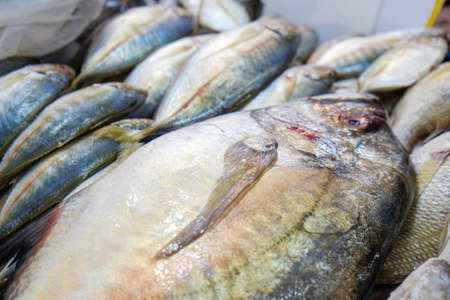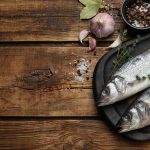1. The Allure of Trophy Panfish
Across the United States, there’s a growing passion for pursuing trophy panfish—especially big bluegills and redear sunfish. What draws anglers to these seemingly modest fish? For many, it’s the thrill of chasing an outsized catch in overlooked waters close to home. Unlike high-profile game fish, panfish are accessible to almost everyone, whether you’re fishing from a boat or casting from the dock at your local pond. The excitement comes not just from their size, but also from their vibrant colors, tenacious fights, and the surprise of landing a true slab. Catching a trophy bluegill or redear is a badge of honor in the panfishing community, with stories of “dinner plate” bream fueling friendly rivalries and daydreams all year long. These fish connect us to simple joys—quiet mornings on the water, the thrill of a bent ultralight rod, and that sense of accomplishment when you hold up a palm-sized giant for the camera. It’s no wonder trophy panfish hunting has become a favorite American pastime.
Knowing Your Quarry: Species & Seasonal Behavior
When it comes to trophy panfish hunting, a deep understanding of your target species can make all the difference. Bluegills, redear sunfish (often called “shellcrackers”), and other slab panfish each have their own quirks, preferences, and seasonal patterns. If you want to consistently land those giants, get to know what makes each fish tick.
Meet the Heavy Hitters: Bluegills vs. Redear Sunfish vs. Others
| Species | Key Features | Preferred Habitat | Notable Behaviors |
|---|---|---|---|
| Bluegill | Deep blue/black operculum flap; vertical bars on sides | Weedy bays, shallow shorelines, slow-moving water | Nest in colonies; aggressive during spawning; love insects |
| Redear Sunfish (Shellcracker) | Distinctive red edge on operculum; larger mouth than bluegill | Sandy bottoms, clear lakes and ponds with submerged logs or shells | Mollusk eaters; spawn slightly earlier than bluegills; less likely to school tightly |
| Pumpkinseed & Other Panfish | Iridescent body spots; orange belly (pumpkinseed) | Vegetated shallows, slower rivers, or backwaters | Tolerant of cooler temps; mix with bluegill schools in summer |
Seasonal Movements: When & Where to Find Slabs
The key to targeting trophies is timing. In spring, bluegills and redears move shallow for the spawn—this is prime time for sight-fishing big bulls off beds. As water warms into summer, they slide deeper seeking cooler, oxygen-rich water. In fall, they roam weed edges and drop-offs hunting for forage before winter sets in. Winter finds them schooled up tight over deeper structure.
Quick Guide: Seasonal Patterns at a Glance
| Season | Location Hotspots | Behavior Notes |
|---|---|---|
| Spring (Spawning) | Shallow flats, sandy coves, gravel banks | Aggressive strikes; nesting in colonies; easy targets near beds |
| Summer (Post-Spawn) | Deeper weed lines, drop-offs, submerged timber | Larger fish go deeper; midday bite slows down; focus on early morning/evening windows |
| Fall (Feeding Up) | Weed edges, rocky points, creek mouths | Feeding heavily before winter; mixed schools possible; active throughout the day as temps cool off |
| Winter (Cold Water) | Main lake basins, holes near structure, brush piles in deep water | Tight schools; sluggish bites; downsize presentations for best results |
Dive Into Local Knowledge for Success
No matter where you fish—be it a Midwest farm pond or a Southern reservoir—talking with locals and keeping notes on your own trips will help you dial in these patterns even further. Trophy panfish hunting is part science and part art: learn their behaviors and let your time on the water teach you the rest.

3. Gear Up: Tackle, Bait, and Essential Tools
If you’re serious about chasing trophy bluegills, redear sunfish, or slab-sized crappies, having the right gear is half the battle. Across America’s lakes and ponds, panfish enthusiasts have honed their tackle setups to a fine art—so let’s break down what works best for landing those brag-worthy fish.
Rods & Reels: Light and Lively
Panfish may not grow as large as bass or catfish, but when you’re targeting trophies, a sensitive rod is key. Most U.S. anglers swear by ultra-light or light spinning rods in the 6 to 7-foot range. These rods offer the perfect blend of finesse and backbone for detecting subtle bites from big bluegills and giving you enough control during the fight. Pair your rod with a smooth, lightweight spinning reel—something in the 500 to 1000 size range works beautifully for most situations.
Line: Thin but Tough
When it comes to line choice, 2-6 lb test monofilament or fluorocarbon is a go-to among trophy panfish hunters. These lines are thin enough to keep presentations natural (especially in clear water), but they’ve got the muscle needed if that dinner plate-sized ‘gill heads for cover. If you like braided line for its sensitivity, just add a short fluorocarbon leader to keep things stealthy.
Baits: Proven Favorites and Local Secrets
No matter where you fish in the U.S., live bait remains king for targeting true panfish giants. Waxworms, nightcrawlers, red wigglers, and crickets consistently draw bites from hefty sunfish and redears. For artificial options, micro jigs tipped with soft plastics or tiny spinners are time-tested favorites—especially when fished slowly around weed edges or submerged timber. Don’t be afraid to ask at local bait shops; every region has its own secret weapon!
Essential Tools: Don’t Leave Home Without Them
A good pair of hemostats or long-nose pliers makes hook removal easy and safe for both you and your catch. A small landing net is handy for scooping up slab panfish without risking break-offs at the boat or bank. And never forget a reliable measuring tape or bump board—after all, documenting your personal-best bluegill is part of the fun!
Pro Tip from Panfishing Communities
Many seasoned American panfish hunters recommend keeping your tackle simple but organized. Use compact tackle trays with divided compartments for quick access to hooks, split shot, bobbers, and extra jig heads—so you’re always ready when that trophy bite happens.
4. Technique Tips for Landing Giants
When it comes to trophy panfish hunting, mastering your technique is just as important as finding the right spot. Big bluegills and redear sunfish didn’t get their size by accident—they’re often the smartest fish in the pond or lake. Below, we’ll break down proven strategies for presentation, retrieval, and boat positioning so you can outsmart even the wariest slabs.
Presentation: Finesse is King
Presentation is everything when hunting trophy panfish. These giants have seen it all, so subtlety goes a long way. Consider downsizing your tackle—think 1/64 to 1/32 oz jigs and small plastics or live baits like waxworms and crickets. Use light line (2-4 lb test) for less visibility and a more natural drift. Let your bait fall slowly and naturally; sometimes, a slight twitch or pause can make all the difference.
| Bait Type | Best For | Presentation Tip |
|---|---|---|
| Tiny Soft Plastics | Big Bluegill | Slow jig with occasional twitches near structure |
| Red Wigglers | Redear Sunfish | Crawl along bottom to imitate natural forage |
| Waxworms/Crickets | All Panfish | Suspend under bobber, keep movement minimal |
Retrieval: Slow and Steady Wins the Race
Large panfish are notoriously cautious, especially during midday or high-pressure conditions. A slow and steady retrieve usually produces more bites than erratic jerks. Vary your speed until you find what works—sometimes a stop-and-go cadence or gentle lift-drop pattern will trigger strikes from big fish hugging the bottom or lurking near weed edges.
Favorite Retrieval Patterns:
- Lifting & Dropping: Raise your rod tip slowly, then let the bait flutter back down.
- Dead-Sticking: Hold your bait still with occasional micro-movements.
- Pendulum Swing: Cast past your target, then let the bait swing naturally through prime water.
Boat Positioning: Stay Stealthy & Strategic
Your boat position can make or break your success with trophy panfish. Approach likely hotspots quietly—electric trolling motors or paddling are best to avoid spooking wary fish. Keep a healthy distance from shallow areas and cast toward them instead of driving over them. In windy conditions, use anchors or spot-lock features to hold position without drifting into prime spots too quickly.
Panfish Boat Positioning Checklist:
- Approach from downwind for natural lure presentation
- Avoid loud noises—no slamming hatches or dropping gear!
- Use electronics to pinpoint structure before casting
- If shore fishing, move slowly and cast parallel to cover for longer time in the strike zone
Nail these tactics and you’ll be well on your way to putting some real wall-hangers in the livewell—just remember, patience and attention to detail are your best friends when you’re chasing true trophy panfish.
5. Hotspots: Where Trophy Panfish Lurk
Finding those elusive jumbo bluegills and slab redear sunfish isn’t just luck—it’s all about reading the water and understanding where these panfish giants call home. Across the American landscape, trophy panfish often inhabit overlooked waters like backcountry ponds, weedy lake coves, and quiet river backwaters. When scouting new spots, look for healthy aquatic vegetation, submerged timber, and drop-offs adjacent to shallow flats—these areas provide food, cover, and the right conditions for big panfish to thrive.
Decoding Local Waters
Start by tapping into local knowledge. Bait shops, online forums, and state fisheries reports can clue you in on lakes and ponds known for producing outsized sunfish. Don’t overlook smaller bodies of water; neighborhood ponds or farm reservoirs often harbor surprise trophies thanks to less fishing pressure. In the Midwest and South, oxbow lakes and slow-flowing bayous are prime haunts, while up North, glacial lakes with abundant weed beds are a classic hotspot.
Reading the Landscape Like a Local
Pay attention to seasonal cues. In spring and early summer, big bluegills and redears gather in protected shallows to spawn—think quiet coves or sandy flats near emergent vegetation. As summer heats up, they retreat to deeper weed edges or shady timber piles. In fall, they’ll follow baitfish schools to mid-depth flats or creek channel intersections. Watching bird activity (like herons or ospreys) can also tip you off to productive feeding zones.
Leveraging Modern Tech
Today’s fish-finding electronics give trophy hunters a serious edge. Side-imaging sonar helps reveal submerged structure and even distinguish clusters of panfish from other species. GPS mapping lets you mark productive waypoints for return trips. Some anglers use portable fish finders when hiking into remote ponds—just cast out the transducer and get a real-time scan of what’s below.
Whether you’re glassing for beds along a wind-protected shoreline or scanning drop-offs with your favorite sonar app, knowing how to spot these trophy hotspots is the first step toward landing the catch of a lifetime—and building your own collection of panfish stories worth sharing around any American campfire.
6. Catch, Photograph, Release: Conservation & Panfish Ethics
Landing a true trophy bluegill or redear sunfish is a heart-pounding moment for any angler, but the legacy of panfish hunting goes beyond a single catch. In the U.S., conservation-minded fishing is part of our outdoor culture—so understanding the importance of ethical practices ensures these special fish are around for generations to come.
Handle with Care
Big panfish are more than just a thrill; they’re vital breeding stock that keep local populations healthy. Always wet your hands before touching a trophy catch to protect its slime coat. Avoid squeezing their bodies or handling them excessively—support the fish gently under the belly and behind the head.
Take Photos Responsibly
We all love showing off our catches, but speed matters. Have your camera ready, frame your shot while the fish is still in the water, and keep it out of the lake for as short a time as possible. Try holding your panfish horizontally and close to the water’s surface for a natural look and safer release.
The Art of a Safe Release
Return your trophy panfish to the water carefully. Hold it upright until it swims away under its own power, giving it a chance to recover from the fight. If you’re ice fishing, avoid exposing fish to freezing air and make sure release holes are clear and safe.
Panfish Ethics: Lead by Example
Practicing catch-and-release with big panfish isn’t just about personal satisfaction—it sets an example for friends and future anglers at the lake or pond. By letting those giants swim free, you help preserve America’s favorite fishing memories and give others a fair shot at landing their own trophy bluegills or redear sunfish someday.


